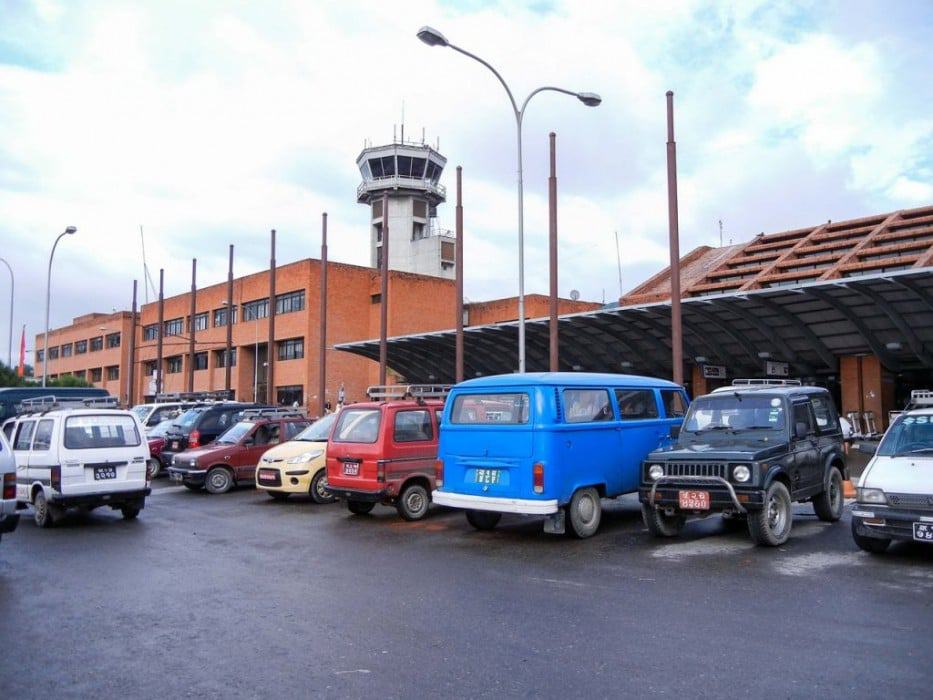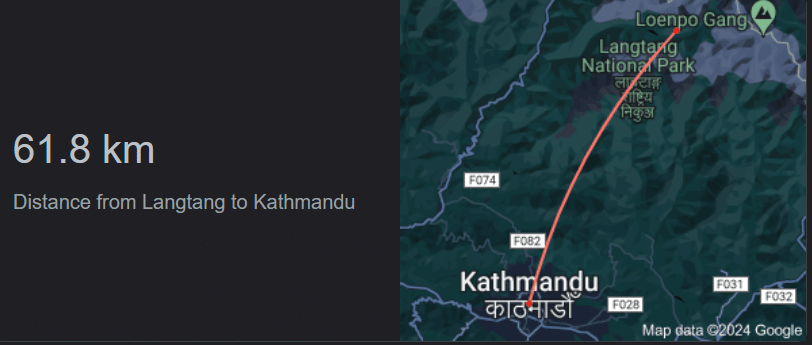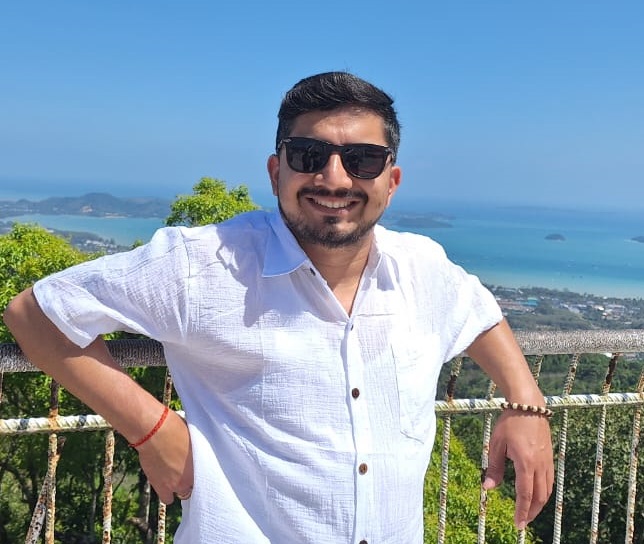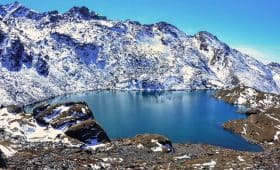There are a few options for us to reach Langtang from Kathmandu.
In the article below, we will go into detail about all the available options and provide some other general information to help you plan your incredible trekking journey in the Langtang region.
The Langtang region lies north of the Kathmandu Valley and offers breathtaking views of high mountain ranges and hilly landscapes.
Trekking in this region provides you an unique opportunity to explore the culture and traditions of the locals inhabitants of the area.
Langtang Valley trek is ideal for those who want to avoid crowds and immerse themselves in the beauty of nature.
You will traverse beautiful landscapes, witness the breathtaking Himalayas and explore the Tibetan-influenced culture of the people in Langtang.
The Langtang region is fairly close to Kathmandu, with Tibet lying beyond the Himalayas and bordering Langtang from the north.
Gosainkunda and several mountain lakes are further south and high up in the mountains.
To begin the Langtang trek, you will have to travel by bus or jeep to Syabrubesi – the trailhead of the Langtang Valley trek.
From there, your trek will begin, as you ascend and descend hills, cross bridges and smile at the locals you meet along the way.
Table of Contents
- Discover the Best Ways to Reach Langtang from Kathmandu:
- Transportation to Syabrubesi
- Itinerary of a Trek from Syabrubesi to Langtang
- When should you reach Langtang?
- FAQs
- How do I get to Langtang from Kathmandu by road?
- How can I reach Langtang from Kathmandu by car?
- What about reaching Langtang from Kathmandu by bus?
- How far is Kathmandu from Langtang?
- And the distance from Kathmandu to Langtang by road?
- What’s the deal with Kathmandu to Syabrubesi?
- Where can I get a bus ticket from Kathmandu to Syabrubesi?
- In Conclusion,
Discover the Best Ways to Reach Langtang from Kathmandu:
Transportation to Syabrubesi

You can reach Syabrubesi in about 7-8 hours if you do not encounter slowdown or jam along the way.
There are local buses, express buses and public jeeps available in Kathmandu.
Buses carry passengers and loads more than their capacity.
So tourists usually find the bus drive quite overwhelming.
But, this long and uncomfortable bus ride combines with views of the magnificent Himalayas.
Route from Kathmandu to Syabrubesi
Balaju – Nagarjun – Okharpauwa – Kakani – Ranipauwa – Belkot – Pipaltar – Bidur – Trishuli Bajar – Bhainse – Betrawati – Kalikasthan – Ramche (You enter Langtang National Park here) – Thade – Dhunche – Thulo Barkhu – Syabrubesi
Traveling by local bus
Buses to Dhunche and Syabrubesi start from Machhapokhari in Kathmandu.
Packed in like sardines, passengers fill the bus completely.
You may also see people sitting on top of the bus.
The remaining spaces are filled with loads of materials that people step onto and sit over.
Moreover, buses stop at every small town they pass by to pick up and drop off goods and passengers.
The travel time can extend to 9-10 hours or more.
Sometimes, if you happen to travel on top of a bus, there may be goats and chickens to accompany you.
Despite all these discomforts, you will be graced with breathtaking views of the landscapes and Himalayas during this journey.
Traveling by Express Bus
You can reach Syabrubesi more quickly on an express bus.
Express buses do not stop at every village they pass by, so they take 1 or 2 hours less than standard local buses.
Goods destined for Dhunche and Syabrubesi fill up their roof racks and aisles.
Traveling by Jeep
Besides buses, you can also travel to Syabrubesi by jeep, called a Tata Sumo – a compact 4×4 SUV.
Although jeeps can be slightly faster than buses, traffic and the status of the road hugely affects the overall travel time.
So, you will not have a huge time gap between bus and jeep travel time spans.
Jeeps leave from Machhapokhari around 7:30 a.m. every day with 8-10 passengers.
Traveling privately
Hiring a private jeep or car can be expensive.
You may have to pay about $150 for one-way travel.
So, if you decide to hire a private jeep, you can search for travelers to share the ride.
Expect several stopping
Roads to Langtang have a lot of stops.
Besides bathroom breaks and lunch breaks, you may encounter a minimum of three checkpoints.
You should carry a couple of photocopies of your passport for a comfortable process.
Nepali police, Nepal Army and Armed Police Force check your paperwork at their respective checkpoints.
Also, Langtang National Park staff checks your TIMS card and Langtang National Park entering permit at the entrance.
Rainy Season- A Season to Avoid

It rains a lot in June and July in Nepal.
During the rainy season, travelers suffer a lot on unpaved and muddy roads.
Landslides occur in multiple places, which can result in traffic jams.
The route can be blocked for hours and sometimes days due to landslides.
The roads have deep mud and become very slippery.
Drivers have to drive slowly, and this can lead to traffic jams.
If a vehicle gets stuck in the mud, this can affect the traffic for a long time.
So, avoid traveling on this road during the rainy season.
Even if you have to travel, make sure the road is not blocked. If landslides or other disturbances block the road, follow an alternative route to Syabrubesi.
Alternative routes:
Kathmandu- Tokha- Bidur- Betrawati- Dhunche – Syabrubesi
Kathmandu – Galchhi – Betrawati – Dhunche – Syabrubesi
Want more information? Send us your query, and our experts will get back to you within 24 hrs.

Itinerary of a Trek from Syabrubesi to Langtang
After a long and enduring bus journey brings you to Syabrubesi, you will stay overnight there.
The trek in the Langtang region starts the next morning.
Syabrubesi to Lama Hotel
The first day of your trek begins after your morning breakfast.
You cross the Bhote Koshi River and follow the Langtang River for hours.
You pass through Pahare, Hot Spring, Bamboo, and Rimche to finally reach Lama Hotel.
The trail to Lama Hotel is 7 miles long and takes about 6 hours to complete.
Lama Hotel to Langtang Village
After your morning breakfast, you will trek for one and a half hours through forests to reach Gumnachok.
Two more hours of walking from there takes you to Ghoda Tabela.
You can see beautiful views of Langtang Lirung from Ghoda Tabela. You can rest there and have lunch.
After lunch, you continue your trek through pastures and forests to Thangshyap.
Then you ascend for about one and a half hours to reach Chyamki. One more hour trek from Chyamki takes you to Langtang Village.
Langtang Village to Kyanjin Gompa
The trek distance from Langtang Village to Kyanjin Gompa is short.
You walk on the trail passing through yak pastures and forests to reach Kyanjin Gompa.
A slow walk takes you about three hours to get there.
Returning Back
Trekkers usually rest or climb to Tsergo-Ri in the next day in Kyanjin Gompa.
The following morning, you start retracing your journey to Lama Hotel.
After staying the night there, you return to Syabrubesi by passing through captivating forests along the Langtang river.
The overnight stay in Syabrubesi brings the day you have to travel by a long and enduring bus drive back to Kathmandu.
Langtang has always been among the top trekking destinations in Nepal.
Traveling to Syabrubesi and then trekking in the Langtang region will be a memorable experience.
The scary road to Langtang, well-trodden trails leading across forests, yak pastures, streams and villages all combine to make the trek an unforgettable adventure.
Standard 8-day Langtang Valley Trek itinerary
Day 1: Ride a bus or private jeep to Sybru Bensi (1462meters). Approximate 7 hours ride.
Day 2: Trek to Lama Hotel (2500meters) 5 hours.
Day 3: Trek to Langtang Village (3307meters) 5 hours.
Day 4: Trek to Kyanjin Gompa (3798meters) 4 hours.
Day 5: Kyanjin Ri (4773m/3 hours) or Tsergo Ri (4984metrs/7 hours) – destination decided by group and back to Kyanjin Gompa.
Day 6: Trek to Lama Hotel about 6 hours.
Day 7: Trek to Syabru Besi about 6 hours.
Day 8: Ride a bus back to the capital Kathmandu, about 7 hours. Transfer to your hotel.
Standard 11-day Langtang Valley with Laurebina Yak Pass and Helambu Trek
Day 01- Drive to Sybru Bensi (1462meters) by local bus or jeep. About 7 hours.
Day 02- Trek to Lama Hotel (2500meters) 5 hours.
Day 03- Trek to Langtang Village (3307meters) 5 hours.
Day 04- Trek to Kyanjin Gompa (3798meters) 4 hours.
Day 05- Trek to Lama Hotel (2500meters) 6 hours.
Day 06- Trek to Thulo Sybru (2250meters) 5.30 hours.
Day 07- Trek to Singompa (3250meters) 5 hours.
Day 08- Trek to Gosaikund (4300meters) 5 hours.
Day 09- Cross over the Laurebina Yak pass (4610meters) then trek to Day 13- Trek to Kutumsang (2470meters). 6 hours. Overnight at
Day 10- Trek to Chisopani (2215meters). 5.30 Hours.
Day 11- Trek to Sundarijal and drive to Kathmandu (1300meters). 4hours.
Both the 8-day and 11-day Langtang trek itineraries provide the best experience.
Choosing the right one depends on your available duration for the trek and the level of challenge you would like to take on.
When should you reach Langtang?
Nepal experiences mainly four seasons.
Spring, monsoon, autumn and winter are the four main seasons.
March to May falls under spring, June to August is the monsoon season, September to November is autumn, and December to February is winter.
For trekking in Nepal, autumn and spring are considered the best seasons due to their characteristics of dry weather, clear blue skies and views of snow-topped Himalayan mountains.
As an alternative to these two main seasons, we highly recommend December if you are looking for a trek like the Langtang Valley Trek that doesn’t involve high pass crossings.
However, you do need to prepare properly considering the temperatures that December offers.
The monsoon season is also the right time for those who enjoy walking in the rain, appreciating fog-covered hills and lush greenery all around.
No matter when you travel to Langtang from Kathmandu, this region will offer you a great experience that will stay in your memory for years to come.
FAQs
How do I get to Langtang from Kathmandu by road?
You can catch a bus or hire a taxi to go from Kathmandu to Langtang. The journey is like a road trip going north, and it takes a few hours to reach Langtang. You’ll see beautiful views along the way.
How can I reach Langtang from Kathmandu by car?
If you have a car, just drive north on the road leading to Langtang. Make sure your car is good for the mountains, and the journey might take a few hours, depending on traffic and road conditions. Enjoy the scenic drive!
What about reaching Langtang from Kathmandu by bus?
To get to Langtang from Kathmandu by bus, head to the main bus terminals. Look for a bus heading to Langtang, and you’ll enjoy the ride with great views. Buses to Langtang are available for this picturesque journey.
How far is Kathmandu from Langtang?

The distance from Kathmandu to Langtang is around 61.8 kilometers. It’s a bit of a journey with winding roads and beautiful landscapes to keep you company.
And the distance from Kathmandu to Langtang by road?
The road distance from Kathmandu to Langtang is about 61.8 kilometers. It’s a road trip with stunning views of the Himalayas, so get ready for an amazing adventure.
What’s the deal with Kathmandu to Syabrubesi?
To reach Syabrubesi from Kathmandu, grab a bus or drive a car. Syabrubesi is where many treks to Langtang start, and the journey gives you a taste of rural life.
Where can I get a bus ticket from Kathmandu to Syabrubesi?
You can buy bus tickets from the main bus terminals in Kathmandu. Just check the schedule and make sure to get your ticket early. It’s an affordable way to reach Syabrubesi for your adventure.
In Conclusion,
In the above post, we have read about some options to reach Langtang from Kathmandu.
You may now have a better understanding of those options to help you choose the right one for you.
Personally, I prefer the option of a private jeep to reach Langtang, as this choice offers a comfortable journey.
With a private jeep, you can stop at various places, take photos and spend time as you like.
This allows you to avoid the crowded and potentially intimidating journey on Nepalese highways, as the private jeep driver can accommodate your request to drive slowly.
Having enough legroom and a comfortable private jeep is what you should consider planning for during the trip.
Alternatively, you can choose to go by a local bus but return using a private vehicle to give yourself some comfort after the long and tiring trekking journey in the Langtang region.
In addition to these driving options, I hope this information also helps you get an idea of some alternative itineraries around that region.
Are you interested in visiting this ‘Valley of Glaciers’? Or do you wish to explore the diverse culture of Langtang Valley?
If yes, allow us to plan the best itinerary for you.
Please feel free to contact us. We are just an email away from you.
Want more information? Send us your query, and our experts will get back to you within 24 hrs.

Madhav started working as a porter in 2001 and then moved on to work as a trekking guide. After working in the trekking and tourism industry for eight years, he co-founded Mosaic Adventure in 2009.
Madhav has trekked to most of the trekking destinations in Nepal, including Everest Base Camp Trek, Annapurna Base Camp, Annapurna Circuit Trek, Poon Hill Trek, Jomsom Muktinath Trek, Indigenous Peoples Trek, Langtang Valley Trek, Mardi Himal Trek, and all of the day hikes around Kathmandu.
He has also extensively traveled to other countries such as Australia, the USA, the UK, France, Hong Kong, Japan, China, the Philippines, the UAE, Saudi Arabia, Bahrain, Thailand, Turkey, and India. Madhav is the one who answers most of your questions about trekking and tours and helps to plan your trip by giving a personal touch.




